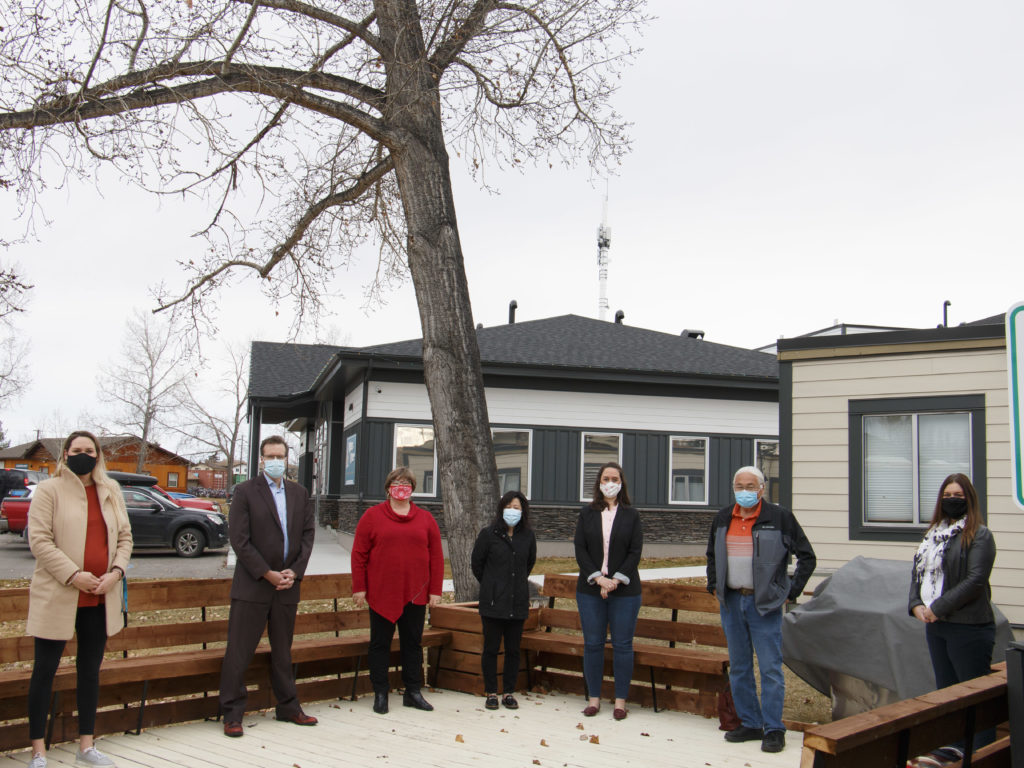Three Hull Programs Get New Names
New Reflections
Shining A Different Light on Program Names
Names contain meaning for people; they hold incredible importance to our identity. The story of a name reveals the significance and symbolism behind it.
The stories behind the program names at Hull Services hold a more profound, more symbolic meaning than one might realize. Hull recently changed three program names on our SW campus to better reflect the young people receiving care, while also honouring our Indigenous culture.
Three programs were gifted new names by Casey Eagle Speaker, Hull’s Indigenous Resource Coordinator, through a naming ceremony, all of which stem from the Blackfoot culture’s understanding of the word and how it represents the young people and the treatment in the program.
“The Blackfoot names are significant in recognizing the ancestral lands of the Blackfoot Confederation that Hull is situated on, as is the city of Calgary,” said Eagle Speaker. “To have Indigenous inclusion is important to create a culturally safe place with humility, to give those we serve a sense of freedom and direction.”
Three therapeutic campus-based care programs received new names: Cottage One, Cottage Seven, and TRACC. These programs provide specialized treatment for children and youth with developmental, emotional, mental health and behavioural support needs, while also supporting caregivers and families.
Cottage One, which supports youth aged 12-17 who experience developmental, emotional and behavioural struggles, was gifted the name River Lodge or nii’htaa moyis in Blackfoot. A river symbolizes the young person’s unique journey through their life; at any point, they can step into the river of treatment and healing. Just as in a physical river, the river of treatment will have tumultuous periods of rapids and periods of calm. The riverbanks signify family, staff, natural and professional supports that will guide and support them.
“It is meaningful that all rivers flow towards a larger body of water, which represents the sense of a healthy and safe community that we hope our young people also move towards,” said Misty Brigham, Program Director for Cottage One. “Once rivers reach the ocean, no matter how murky they were, the waters clear.”
Cottage Seven, which supports youth aged 6-17 who have developmental delays and severe behavioral and mental health struggles, was gifted the name Turtle Lodge: Developmental Treatment Centre, or sspopii moyis in Blackfoot. A turtle represents creation and motherhood; it is a symbol of longevity, endurance, persistence and the continuation of life. The turtle gently teaches us the art of adapting to new surroundings and environments.
“We believe that sspopii moyis beautifully describes the young people at Cottage Seven, particularly with regards to the concept of resilience in the face of incredible odds and the capacity to adapt to new environments,” said Nadège De Pape, Program Director. “Turtle Lodge: Developmental Treatment Centre authentically represents the youth in the program, captures our commitment to Indigenous relationships, and honors the clinical work that is being done every day.”
TRACC, which supports youth who experience serious emotional and/or behavioural difficulties and who are not yet able to be effectively served in the community, was gifted the name Track: Young People’s Lodge, or aast’ taapii moyis in Blackfoot.
“The meaning behind the name is that, as young people, we are growing and learning as we transition to adulthood; we’re going to make mistakes,” said Andrea Ulrich, Program Director. “And through these mistakes, we grow, establishing our identify, who we are and who we want to be.”
The three programs’ former names hold historical significance to Hull, but as the programs and the Agency evolve and grow, the names need to better reflect the current work with the young people we serve.
The new program names are intended to mirror the people we serve and have meaning to which they can relate. The programs, what they stand for and how they support those they serve, are an important part of the young people’s healing journey, helping them to build resilience for a brighter tomorrow.


